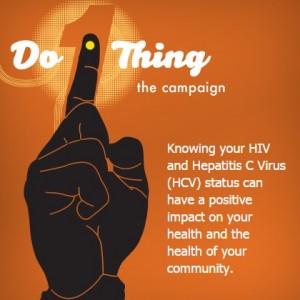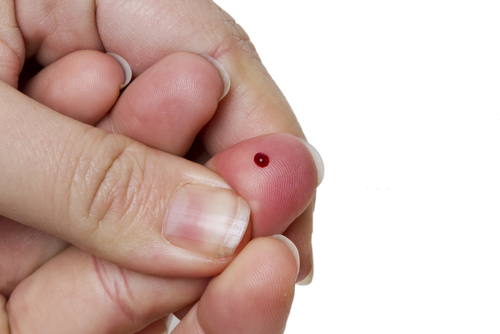 Despite the fact that medically underserved populations usually lack access to both screening and treatment to hepatitis C virus (HCV), a recent project called Do One Thing, implemented in neighborhoods of Philadelphia, demonstrated that advocating is able to help vulnerable patients. The study, recently published at the Journal of General Internal Medicine, revealed the results of the efforts of medical experts and volunteers in deprived areas to bring health care to those who need it the most.
Despite the fact that medically underserved populations usually lack access to both screening and treatment to hepatitis C virus (HCV), a recent project called Do One Thing, implemented in neighborhoods of Philadelphia, demonstrated that advocating is able to help vulnerable patients. The study, recently published at the Journal of General Internal Medicine, revealed the results of the efforts of medical experts and volunteers in deprived areas to bring health care to those who need it the most.
Do One Thing, developed by researchers at the Brown University School of Public Health, is a non-clinical screening program that provides navigator services to patients. The study “Results from a Geographically Focused, Community-Based HCV Screening, Linkage-to-Care and Patient Navigation Program” revealed the effectiveness of the project in diagnosing, connecting, retaining and re-engaging patients in HCV care.
The senior co-author Amy Nunn, who is an assistant professor of behavioral and social sciences at Brown, explained that despite the approval of new medication by the U.S. Food and Drug Administration to cure hepatitis C, there is still a lack of screening and treatment interventions, especially among patients that do not regularly seek medical services. In addition, the Centers for Disease Control and Prevention (CDC) recommended routine screening for HCV in 2013 for baby boomers and high-risk individuals.
“New testing technologies, coupled with new medications that can cure HCV, provide overwhelming opportunity to cure millions of Americans living with HCV, many of whom don’t even know they are infected,” said Nunn in a press release. “Our paper proves that scaling screening and treatment, even in neighborhoods with the highest rates of infection, is possible. We overcame all the commonly cited obstacles in this high-risk population.”
Nunn worked in collaboration with lead author of the study Stacey Trooskin from the Drexel University College of Medicine on the campaign to screen the population in several neighborhoods of Philadelphia for HIV and hepatitis C, as well as link them to health care resources. The program was implemented in December 2012, and involved volunteers, physicians, phlebotomists, patient advocates also known as “navigators,” and social workers who went door-to-door and offered screening.
The collaborators of the program conducted rapid screening tests, and in the case of having a positive result, a blood sample collection could be sent to a lab. Patients whose results confirmed they had chronic hepatitis C infections were given a full suite of services to guide patients for them to acquire health insurance, access to medical experts.
“This study demonstrates the importance of community-based testing for HCV in identifying previously undiagnosed individuals and re-engaging those aware of their diagnosis but not currently in care,” believes Trooskin. “We learned that a comprehensive approach to nonclinical testing is critical and must integrate immediate access to confirmatory testing as well as intensive patient navigation to effectively link patients to care.”
“Although hepatitis C is now a curable disease, we identified new barriers to care such as the need for a referral to subspecialty care and challenges obtaining medication approval for patients, particularly those covered under Medicaid,” she explained, while Nunn believes it is crucial to have health care professionals in place to help the patients.
“The secret is the dedicated physician, the patient navigator, and the clinical social worker,” stated Nunn. “One unanticipated challenge is the staff time associated with haggling with payers about coverage for the drug. With the advent of new medications that can cure hepatitis C, we have created a culture of urgency about staying in care and cure. This model works because the very same person that delivers your confirmatory test is the person that holds your hand all the way to cure.”
Between 2012 and February 2014, the team from Do One Thing tested 1,301 people in Philadelphia, with 4% anti-HCV antibodies incidence. In addition, 433 people — a third of the sample — had been incarcerated, while others had a history of drug abuse, mental illness, and over 50% earned less than $15,000 a year, according to the demographic questionnaires.
From the 52 people who had positive results for antibodies in the initial screening, only four actually engaged in HCV care. On the other hand, 36 from the initial 42 who received confirmatory tests were chronically infected, despite the fact that 21 people already knew about the infection. In addition, from the group of chronically infected patients, more than half suffered an alcohol use disorder, and all of them who did not have access to health care were forwarded to health services and advised on getting insurances.
“Referrals often necessitate an extra primary care physician visit and create an opportunity for disengagement, particularly for vulnerable populations with low health literacy,” explained the authors, as they believe receiving a hepatitis C subspecialist referral is the largest barrier they found. However, they were capable of providing guidance to 12 patients in order to receive medication that can be helpful in improving their quality of life and life expectancy.
“At the beginning, many naysayers said this wasn’t worth doing because these patients will be uninsured or have problems with addiction; many people thought we wouldn’t be able to get them insured, linked, and retained, much less ever get them drugs to cure their hepatitis,” added Nunn. “But we’ve been able to overcome all the of the commonly perceived barriers to not screening and treating people. This model works. That’s the bottom line.”

